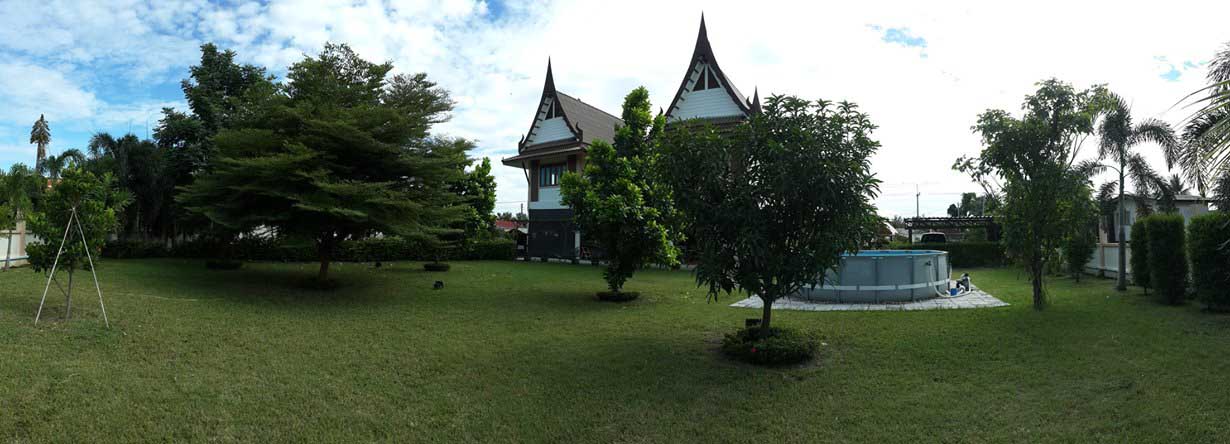-
Posts
46,453 -
Joined
-
Last visited
-
Days Won
2
Content Type
Events
Forums
Downloads
Quizzes
Gallery
Blogs
Everything posted by Crossy
-
So, the plonk was potentially younger than this thread ???? We still miss the stuff we got from the cash-and-carry in Brussels. It was called Le Bolleaux (it really was The Dogs) French vin-de-table, 4.50 euros for 3 bottles!
-

PEA and Solar how low can you go?
Crossy replied to MJCM's topic in Alternative/Renewable Energy Forum
What's the limit on usage for 5/15 meters to get 0 Baht? It might be cost effective to bang up a couple of panels for the family to get them into the "free zone". -
Ah, I just gloop it on like toothpaste and spread it by wrigging the bus-bar ???? You really need a tiny amount, I'm sure the instructions will tell you, but I'm an engineer, instructions are for wooses!
-
Yup. I don't bother with "cleaning" other than a wipe with a paper towel, we're not really removing much material. But, it's entirely up2u.
-
400 grit abrasive paper of whatever flavour you can get (glasspaper, emery, carborundum or whatever) will shift the oxide layer. Clean the mating faces then assemble, using the gloop or not as you feel. No point using alcohol unless you have grease on there.
-

PEA and Solar how low can you go?
Crossy replied to MJCM's topic in Alternative/Renewable Energy Forum
This going to hurt a lot of low income families ???? Is there any further low-usage concession available? -
Yeah, I've been reading that too. Most of it is related to how the NEC specifies the required bonding to be "to code" (the NEC is highly prescriptive). If we just let the inverter do its thing and don't wave extra bonds around it should all work just fine.
-
I would avoid mixing grounding systems with the inverters and distribution board in close proximity. The risk of getting your body between two different earthing systems which may not be at the same potential is small but definitely non-zero. If you intend running mostly off-grid then you could go with a local ground rod for the house and inverters and completely isolate from any grid provided "earth" (which is actually the incoming neutral from the grid). Have no links between the incoming neutral and any of your earths. You will need to provide a N-E link from your inverter (check the inverter manual it may provide one for you) to ensure that your RCBOs operate correctly when off-grid. When operating on-grid do not link N and E so your grounds are still not connected to any grid stuff, just have L & N going to your transfer switch (so you have a TT system, perfectly legal in Thailand). You should discuss this with your sparks (whose head will likely explode).
-
Sadly, no access for mechanical removal methods other than a baby Kubota excavator ???? It's going to be hire some labour to dig out or put a raised bed in. I might try the potassium nitrate followed by diesel and a match on the one that's a bit further from the house.
-
We have a Hafele gas hob and hood. Hob has been fine for 10 years, just needing an occasional clean of the jets (accessible from the top). The hood stopped a couple of years back. Turned out to be a fried transformer, got a suitable replacement on Lazada. It took longer to get the ruddy thing apart / re-assemble than the actual fix.
-
Madam has taken down a couple of trees that didn't survive the floods, so now Muggins here has to remove the stumps ???? They are too close to the house to use the Anfo technique illustrated here: - Any ideas on the best / least effort removal technique?? I may just build a couple of raised beds and put some flowers in.
-
-
When I was in Singapore recently, I asked a Chinese girl at a travel agency if she would escort me on a city tour. I asked for her mobile number, so I could call her to make arrangements. She got very excited and said, "Sex sex sex, wan free sex for tonigh". I thought wow, this must be how Chinese women express their hospitality! Then my friend explained. What she really said was 666136429
-
Yeah, this is all about KYC (Know Your Customer) and is a government requirement ???? Thais have to do it too. You should have received an email with instructions on how to get your wallet contents out to your bank without actually activating.
-
-
Everything from Cooper is a goodie. I saw him live just about a month before he died, he only had to walk out, not a word, audience rolling on the floor ???? A sad loss, way too soon ????
-
Snapsave.app_318551515_539275674447169_2843792233808265878_n.mp4
-
If they are LiFePO4 rather than Li-ion there's very little risk of them going into thermal-runaway ????
-
Yup. Are your inverters etc. remote from the house? If so, it might be better to set them up as a TT "island" with a local earth rod and no earth connection back to the house ground. This is how our solar car-port is grounded, local rod and 2-core cables to the house.
-

Dinosaurs Installed at Government House for Children’s Day
Crossy replied to snoop1130's topic in Thailand News
I was also being mean to the Diplodocus; I understand their brain was actually the size of a tennis-ball ???? -

Dinosaurs Installed at Government House for Children’s Day
Crossy replied to snoop1130's topic in Thailand News
Does a T-Rex really convey the friendly face of government?? Maybe a Velociraptor would be closer? Or a Diplodocus - slow and with a brain the size of a walnut? -
Thai grand-daughter (15) wants to sit in the PM's seat at Government House! She says she can do a better job! I believe her!
-
No way to get away with this now ????
-
Must be a mistake. I only wanted a cheese and Marmite roll and a coffee, but the man in Starbucks seems to have charged me for an Audi R8!









